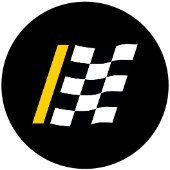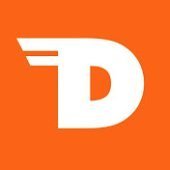-
Welcome to Auto Parts Forum
Whether you are a veteran automotive parts guru or just someone looking for some quick auto parts advice, register today and start a new topic in our forum. Registration is free and you can even sign up with social network platforms such as Facebook, X, and LinkedIn.
Dorman Appoints President of its Light-Duty Segment
-
Similar Topics
-
By Counterman
link hidden, please login to view announced the release of 164 new automotive repair solutions this month for its Light Duty segment. The new products join a growing Light Duty catalog of over 133,000 SKUs, offering millions of new sales opportunities for automotive parts distributors, retailers and repair shops, as well as more accessible solutions for vehicle owners, according to Dorman. This month’s releases include a dozen new Dorman OE FIX repair innovations that provide customers with improved performance and repair convenience that they may not be able to obtain with parts acquired from a dealership,
link hidden, please login to view said. The company added that one of those OE FIX innovations is an upgraded camshaft bridge cover designed for select Volkswagen and Audi vehicles equipped with 2.0L engines. The original equipment cover may fail from pressure pulsations that can cause internal component damage. The Dorman replacement features several design improvements that help mitigate the pulsations and prevent filter clogging that can starve the engine for oil and harm vehicle performance.
“At Dorman, innovation drives everything we do,” said Eric Luftig, senior vice president. “We’re proud to bring groundbreaking solutions to the automotive aftermarket, helping consumers find the right parts when they need them most. Our commitment to empowering vehicle owners and repair professionals with quality, accessibility and reliability continues to fuel our passion for progress.”
Dorman said it continues to expand its components for turbocharger repair and replacement, adding a new OE FIX oil feed line constructed of braided stainless steel over the line’s flexible sections. The line is engineered to offer a more durable replacement compared to the original equipment’s braided nylon sheathing used in certain Ford Escape and Ford Fusion models, the company said.
Additional highlights for March include:
An OE FIX radiator outlet hose for select Dodge Durango and Jeep Grand Cherokee SUVs. The line features a rugged aluminum Y-connector in place of the factory’s plastic connector. A main battery fuse with coverage designed for a significant number of Cadillac and Chevrolet vehicles, and engineered to match the performance of the original equipment fuse. A new transmission oil cooler designed to match the performance of the factory cooler on select Dodge Durango SUVs. The cooler joins a comprehensive lineup of quality fluid coolers from Dorman.
The post
link hidden, please login to view appeared first on link hidden, please login to view.
link hidden, please login to view -
By Counterman
Like many parts professionals, I’m a little bit OCD. My coworkers might tell you that’s an understatement. Organization has always been a pet project of mine, from designing and implementing planograms for the retail floor to maximizing storage space in the areas behind the counter.
For the retail areas of our stores, we receive a great deal of support from the various manufacturers that make up our line cards. Corporate planograms, signage and other materials not only make it easier for us to effectively display retail products, but these professionally designed merchandisers also serve as advertising for the manufacturer. Having a particular category or brand offering consolidated in one place makes it more convenient for a customer to find what they need with minimal assistance, and the manufacturer can display the items they feel showcase their brand more effectively and profitably.
The “back of house” area is an entirely different world when it comes to inventory organization. Warehousing and other non-public-facing storage areas need not be visually appealing to attract customer dollars, but they should be designed to maximize inventory dollars per square foot, and to encourage safe and efficient workflow when picking orders and restocking products.
With products from multiple vendors sharing warehouse space, a simple and logical method of organization is to group items first by manufacturer/brand, and then alphanumerically. For most of our manufacturers, this works well because their product offerings are often similar in size and packaging. For manufacturers with varied product lines, this becomes a bit more challenging. A chassis parts inventory will include a wide variety of package sizes and shapes, making it difficult to store long items like drag links in the same space as a relatively compact ball joint package, or the large irregular shapes found when organizing boxed control arms. A well-defined part numbering system can help alleviate some of these storage issues, but there always seems to be one or more outliers, leaving the stock clerk to figure out how to shelve them effectively.
In the OEM dealership world, parts generally come from a single source. With a single “brand,” and often cryptic part numbering systems, the alphanumeric inventory method becomes nearly impossible. Consecutive part numbers could (theoretically) be as varied as a bolt, a set of brake pads and a door shell, none of which would sensibly be shelved together. For most dealer parts departments, a “bin location” system is necessary to customize and maximize storage. Each part number is assigned a location code, corresponding to a specific shelf, drawer or bin somewhere in the warehouse.
The “bin location” method offers flexibility, but adds another level of complexity to organization. Shelving units are more uniformly organized, with like-sized items stored together regardless of function or category. As parts transition through their natural life cycles, they can be added to and removed from their locations, keeping faster-moving parts closer to the counter for ease of picking, or moving a part’s location to accommodate larger stocking quantities of that item. In some cases, it also can allow for items that are frequently sold together to be stocked in the same location. Finally, location coding allows for less-experienced warehouse personnel to find items simply by finding a location and verifying the part number on the order, rather relying on someone’s memory of “where we keep that widget.”
The drawback is in the duplication. Each part number must be assigned additional information when it is initially stocked, and some store-level inventory systems are not designed to accommodate a field for location. Further, if a location code is entered incorrectly, never assigned or a part is mis-stocked somewhere in the warehouse, it easily becomes “lost,” and can be nearly impossible to find until an inventory is performed. Most dealerships maintain a perpetual “bin count” schedule, checking a few bins each day to keep up with this task, making corrections as necessary.
No matter your organizational method, keeping a sense of order is important when designing your back of house area. Minimizing the amount of empty space (not including that reserved for future expansion) maximizes the value of your inventory per square foot. Physical characteristics of some parts will often dictate their unique storage needs, but wherever we can streamline the process of stocking and retrieving parts, we increase efficiency and worker productivity.
The post
link hidden, please login to view appeared first on link hidden, please login to view.
link hidden, please login to view -
By Counterman
Advance Auto Parts announced that it has appointed Jeff Vining as executive vice president, general counsel and corporate secretary, effective March 2, 2025. In this role, the company said Vining will be responsible for all aspects of the Advance’s legal, corporate governance and compliance functions. Vining will report directly to Shane O’Kelly, president and chief executive officer.
The company added that Tammy Finley, who currently serves in this role, is retiring and will stay with Advance in an advisory capacity to support the transition. Finley spent 27 years at Advance in the legal, human resources and communications functions.
link hidden, please login to viewsaid she was vital in leading the company through almost three decades of growth and change management, and, most recently, the divestiture of the Worldpac business. “Jeff’s experience in supporting successful business transformations and driving efficiencies is critical for the success of our strategic action plan,” O’Kelly said. “We are thankful for Tammy’s many contributions over the years along with her passion for Advance and our team members. We wish her all the best as she retires.”
A news release from
link hidden, please login to view explained that Vining brings more than 20 years of deep legal expertise within publicly traded companies, including key areas such as corporate governance, M&A, risk management, labor and employment, and litigation. Most recently, he served as general counsel and secretary at Unifi, Inc., where he was responsible for the company’s global legal functions and ensuring compliance with corporate governance requirements. Vining received his Doctorate of Jurisprudence at the University of Richmond School of Law in Richmond, Virginia, and his Bachelor of Science from James Madison University in Harrisonburg, Virginia.
The post
link hidden, please login to view appeared first on link hidden, please login to view.
link hidden, please login to view -
-




Recommended Posts
Join the conversation
You can post now and register later. If you have an account, sign in now to post with your account.
Note: Your post will require moderator approval before it will be visible.